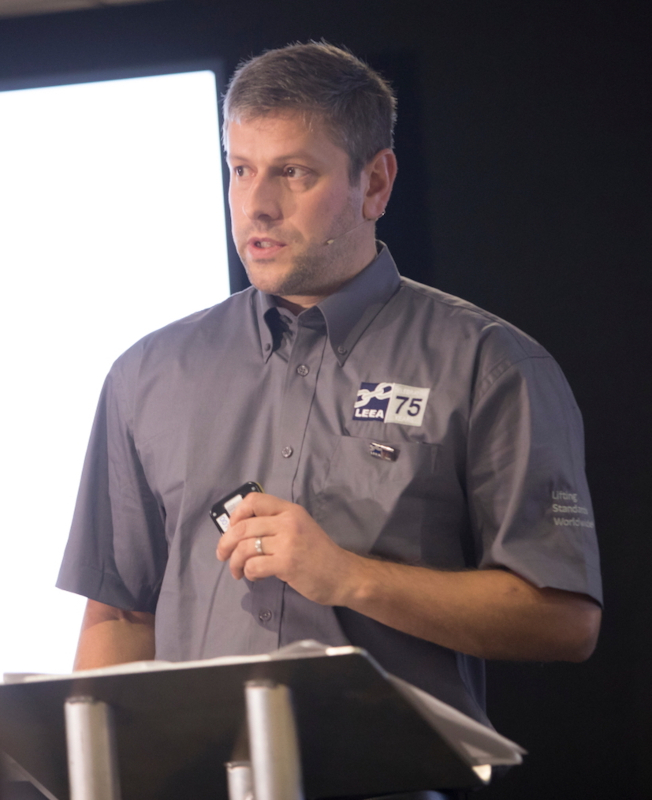LEEA Technical Triage to create web chat for FAQs
17 June 2022Ben Dobbs, head of technical services at LEEA delves into the Frequently Asked Questions (FAQs) sent to the Association’s Technical Triage, which is successfully and rapidly answering technical queries from members all around the world.
An essential part of LEEA’s remit has always been – and will continue to be – to provide unbiased technical advice to its membership. Introducing the Technical Triage in the Autumn of 2018 to manage and respond to technical queries has been a enormous success in contributing to fulfilling this remit by allowing any LEEA member in the world to send a technical query or question via email to a specific address: technicaladvice@leeaint.com.
The technical team aims to deliver a final resolution to the question within 48 hours and logs all technical queries as well as monitoring the response time within technical services.
To further enhance the Triage service, LEEA is in the process of bringing to life a web chat tool so that technical advice is easier, instant and, crucially, will be linked to a database that has been translated into the Association’s key languages.
The following are just a selection from the diverse range of FAQs, which no doubt will be informative for many, though it is important to point out that the content of the answers is provided for general information only. Whilst they are intended to represent a standard of good practice, they have no legal status and compliance with them does not exempt you from compliance with any legal requirements.
Can a person that maintains lifting equipment be the same person that does the thorough examination?
Based on standards and legislation, LEEA requires the competent person to be sufficiently independent and impartial to allow objective decisions to be made. With this in mind the question should really be, ‘can you check your own work?’ It is LEEA’s view that the answer to this question would depend on the complexity of the thorough examination.
For example the thorough examination of a mechanically assembled chain sling following a repair is not a complicated task for a competent person to ascertain whether or not it has been assembled correctly. However, a thorough examination of a hoist following an overhaul of the lifting and braking mechanism is more complex.
Therefore the duty holder or the employer of persons doing the thorough examination should assess the risks in terms of complexity of the maintenance and subsequent thorough examination. The risk assessment should consider whether or not the examiner could be considered as being impartial bearing in mind that the examiner is likely to assume that they have done a great job and as a result perhaps not be as thorough as they ought to be. Sometimes a second pair of eyes will be better placed to act impartial and see defects associated with the maintenance.
Note: human error is the root cause of a significant proportion of incidents. It is also important to note the BS 7121-2 series of standards state: ‘it is essential that the person that does the thorough examination is not the same person that did the maintenance. Therefore with cranes in the UK it would perhaps be advisable to follow the guidance given in the standard’.
What is the correct term to describe the lifting capacity of lifting equipment – ie Safe Working Load (SWL), Working Load Limit (WLL) or rated capacity?
They are all correct and the choice of which to use is really dependant on the use of the equipment, as the following information will explain.
The working load limit, or maximum working load as defined in the Supply legislation, is the load value assigned to the ‘maximum’ safe working load under ideal conditions and in most cases the working load limit and the safe working load will be the same. However, depending upon the conditions of use, it may be necessary for the competent person to reduce this to a lower safe working value and it is in these cases that the working load limit and safe working load will differ.
The rated capacity is the same as working load limit and is a term used for some cranes where the rating varies with configuration.
Who is responsible for adding a unique identification number to an item of lifting equipment?
Supply legislation does not require a manufacturer of lifting equipment to give it a unique identification. It simply requires them to mark one on the product if they have specified one.
User legislation on the other hand requires the duty holder to have lifting equipment Inspected and/or thoroughly examined and issued with a report inspection or thorough examination. This report must identify the equipment without ambiguity so that defects can be remedied efficiently.
In the case where a duty holder has many items of a similar generic form of lifting equipment it is considered best practice to give each piece its own unique identification number, which is then recorded on each thorough examination report, thus ensuring the report is traceable to the equipment without ambiguity.
However, it is important to note that there are other methods of ensuring that the equipment on a report can be identified correctly, such as location for single items, or colour coding for multiple items grouped in a specific area.
The value of FAQs
LEEA also extracts great value from the Triage given that it is a direct connection to the Association’s members and their challenges. For example, LEEA can monitor industrial issues as well as identify any training requirements and shortfalls in standards, legislation, Association guidance and industrial practices. Importantly, the Triage also maintains a single LEEA interpretation of legislation, standards and industrial best practice.
